Points clés
-
Le beurre offre une saveur supérieure et une mie tendre dans les produits de boulangerie au chocolat tandis que l'huile crée une texture plus humide avec une durée de conservation plus longue
-
Le beurre contient des solides de lait qui contribuent à la complexité des saveurs et au brunissement dans les desserts au chocolat
-
L'huile est 100% matière grasse (contre 80% pour le beurre), ce qui permet une meilleure rétention d'humidité et une texture plus tendre dans les gâteaux au chocolat et brownies
-
La température compte : l'huile reste liquide à température ambiante, facilitant le mélange et garantissant une pâtisserie au chocolat toujours moelleuse
-
Le meilleur choix dépend de vos priorités : beurre pour une saveur riche et une mie fine, huile pour l'humidité et la tendreté
-
Envisagez l'approche hybride — utiliser les deux graisses ensemble — pour une pâtisserie au chocolat avec une excellente humidité et saveur
-
Découvrez des ingrédients de pâtisserie premium chez Zucchero Canada pour sublimer votre pâtisserie au chocolat
Introduction : le facteur matière grasse en pâtisserie au chocolat
Lorsqu'il s'agit de créer des desserts au chocolat vraiment exceptionnels, peu de décisions influencent autant le résultat final que votre choix de matière grasse. Le débat éternel entre huile et beurre en pâtisserie au chocolat a des défenseurs passionnés des deux côtés, chacun revendiquant la supériorité de son ingrédient préféré. Mais lequel crée réellement de meilleurs gâteaux au chocolat, brownies et cookies ?
La vérité est plus nuancée qu'une simple réponse binaire. Le beurre et l'huile apportent tous deux des avantages distincts à la pâtisserie au chocolat, leurs propriétés uniques affectant tout, du profil aromatique et de la texture à la durée de conservation et à la facilité de préparation. Comprendre ces différences vous permet de faire des choix éclairés basés sur vos objectifs spécifiques en pâtisserie plutôt que de suivre une recette sans question.
Du point de vue de l'auteur, que vous pâtissiez avec de l'huile ou du beurre, il vaut mieux bien les comprendre pour obtenir le meilleur résultat, c'est-à-dire un gâteau délicieux.
Dans ce guide complet, nous explorerons la science derrière l'huile vs. le beurre en pâtisserie au chocolat, examinerons leur impact sur divers desserts au chocolat, et fournirons des conseils pratiques sur quand utiliser chacun. Que vous soyez un pâtissier amateur ou un chef pâtissier en devenir, maîtriser ces connaissances fondamentales en pâtisserie élèvera vos créations chocolatées à un nouveau niveau.
La science des graisses : comprendre les bases
Différences de composition
Avant d'aborder des applications spécifiques, il est essentiel de comprendre ce qui rend ces graisses fondamentalement différentes :
Composition du beurre :
-
80-82% de matière grasse du beurre
-
16-17% d'eau
-
1-2% de solides du lait (protéines, lactose, minéraux)
Composition de l'huile :
-
100% de matière grasse
-
Pas de teneur en eau
-
Pas de solides de lait ni de protéines
Cette différence de composition est la cause principale de la plupart des variations que vous observerez en comparant l'huile et le beurre dans la pâtisserie au chocolat. La présence d'eau et de solides de lait dans le beurre crée des réactions chimiques pendant la cuisson qui ne peuvent tout simplement pas se produire avec l'huile.
Comment fonctionnent les graisses en pâtisserie
Les deux graisses remplissent plusieurs fonctions cruciales dans la pâtisserie au chocolat :
-
Tendreté: Les graisses enrobent les protéines de la farine, limitant le développement du gluten et créant de la tendreté
-
Levée: Les graisses emprisonnent l'air lors du crémage (beurre) ou du mélange (huile), aidant les produits de boulangerie à lever
-
Humidité: Les graisses créent la perception d'humidité en bouche
-
saveur: Les graisses transportent et renforcent les saveurs, ce qui est particulièrement important avec le chocolat
-
Structure: Les graisses fournissent une structure en se solidifiant lors du refroidissement
Cependant, le beurre et l'huile remplissent ces fonctions différemment en raison de leurs compositions uniques, ce qui entraîne des variations notables dans vos résultats de pâtisserie au chocolat.
Le beurre dans la pâtisserie au chocolat : saveur riche et mie tendre
Comment le beurre améliore la saveur du chocolat
Le beurre apporte des qualités distinctives aux produits de boulangerie au chocolat :
-
Complexité des saveurs: Les solides de lait dans le beurre subissent des réactions de brunissement de Maillard, créant des notes de noisette et de caramel qui complètent la profondeur du chocolat
-
Composés aromatiques: Le beurre contient des centaines de composés aromatiques qui interagissent avec le profil de saveur du chocolat
-
Onctuosité: Les propriétés de fusion du beurre (fond à la température du corps) créent une sensation en bouche luxueuse
De nombreux boulangers professionnels préfèrent le beurre pour les desserts au chocolat où la complexité des saveurs est primordiale, comme le sablé au chocolat, les sablés ou les gâteaux au chocolat délicats.
Avantages structurels du beurre
Les propriétés uniques du beurre affectent la structure des produits de boulangerie au chocolat :
-
Solide à température ambiante: Crée une structure définie en refroidissant
-
Capacité de crémage: Lorsqu'il est crémeux avec du sucre, le beurre emprisonne des bulles d'air qui se dilatent pendant la cuisson
-
Teneur en eau: La vapeur issue de la teneur en eau du beurre contribue à la levée
Lorsqu'on compare l'huile et le beurre en pâtisserie au chocolat, le beurre produit généralement une structure de mie plus définie avec une texture délicate et tendre.
Meilleures recettes au chocolat pour le beurre
Le beurre brille particulièrement dans ces applications au chocolat :
-
Cookies aux pépites de chocolat: La saveur du beurre complète les morceaux de chocolat, et ses propriétés à l'état solide créent un contrôle de l'étalement souhaitable
-
Gâteaux à étages au chocolat: Les gâteaux classiques au beurre ont une excellente saveur et une mie fine
-
Sablé au chocolat: La saveur beurrée est essentielle à la texture traditionnelle du sablé
-
Pâtisserie au chocolat: Les pâtisseries au chocolat laminées ou feuilletées dépendent de la plasticité du beurre
Pour ces recettes, le beurre n'est pas seulement une matière grasse — c'est une base de saveur qui agit en synergie avec le chocolat.
L'huile en pâtisserie au chocolat : humidité et tendreté
Comment l'huile crée l'humidité
L'huile apporte des propriétés différentes mais tout aussi précieuses à la pâtisserie au chocolat :
-
Pourcentage de matières grasses plus élevé: Avec 100 % de matières grasses (contre 80 % pour le beurre), l'huile fournit plus de molécules de graisse pour enrober les protéines de la farine
-
Liquide à température ambiante: Crée une perception d'humidité et de tendreté accrues
-
Pas d'évaporation d'eau: Contrairement au beurre, l'huile ne contient pas d'eau qui s'évapore pendant la cuisson
Ces propriétés expliquent pourquoi les gâteaux au chocolat à base d'huile semblent souvent plus moelleux et restent tendres plus longtemps que leurs homologues au beurre.
Avantages texturaux de l'huile
Lorsqu'on compare l'huile et le beurre en pâtisserie au chocolat, l'huile offre des avantages texturaux distincts :
-
Miette uniforme: L'huile se répartit plus uniformément dans les pâtes
-
Texture plus douce: Crée des gâteaux et muffins au chocolat plus moelleux et tendres
-
Durée de conservation plus longue: Les produits de boulangerie au chocolat faits avec de l'huile restent plus longtemps moelleux et frais
-
Moins de cristallisation: L'absence de solides de lait signifie un processus de rassissement plus lent
Ces avantages rendent l'huile particulièrement précieuse pour les gâteaux au chocolat et les brownies destinés à être servis plus tard ou conservés plusieurs jours.
Meilleures recettes au chocolat pour l'huile
L'huile performe exceptionnellement bien dans :
-
Gâteaux à étages au chocolat: Crée des couches moelleuses et tendres qui restent fraîches plus longtemps
-
Muffins au chocolat et pains rapides: Apporte de la tendreté sans nécessiter de crémage
-
Brownies: Crée une texture fondante avec moins d'effort que le beurre fondu
-
Gâteau au chocolat fou/gâteau de la dépression: Ces gâteaux sans œufs et sans produits laitiers comptent sur l'humidité de l'huile
-
Desserts au chocolat sans produits laitiers: Parfait pour la pâtisserie au chocolat vegan
Pour les gâteaux au chocolat quotidiens et les desserts au chocolat informels où l'humidité et la conservation sont prioritaires, l'huile s'avère souvent supérieure.
Comparaison directe : Huile vs. Beurre dans la pâtisserie au chocolat
Profil aromatique
Beurre :
-
Notes riches et lactées qui complètent la profondeur du chocolat
-
Les réactions de brunissement de Maillard créent des composés aromatiques complexes
-
Saveur beurrée distincte que beaucoup associent aux pâtisseries traditionnelles
Huile :
-
La saveur neutre (végétale, canola) laisse le chocolat être la star
-
Pas de notes laitières concurrentes
-
La saveur varie selon le type d'huile (l'huile de coco ajoute des notes tropicales, l'huile d'olive ajoute de la fruité)
Lors du choix entre huile et beurre en pâtisserie au chocolat, considérez si vous souhaitez que la matière grasse apporte de la saveur (beurre) ou simplement structure et humidité (huile neutre).
Texture et humidité
Beurre :
-
Crée une structure de mie plus définie
-
Produit souvent une texture plus légère et plus "gâteau"
-
A tendance à sécher plus vite en raison de l'évaporation de l'eau
Huile :
-
Donne une sensation en bouche plus tendre et humide
-
Crée souvent une mie plus dense et compacte
-
Conserve l'humidité beaucoup plus longtemps
La différence de texture est particulièrement notable dans les gâteaux au chocolat, où les versions à base d'huile restent généralement humides plusieurs jours de plus que celles à base de beurre.
Facilité d'utilisation
Beurre :
-
Doit être ramolli à température ambiante
-
Nécessite souvent un crémage avec le sucre (étape supplémentaire)
-
Sensible à la température lors du mélange
Huile :
-
Toujours prêt à l'emploi
-
Se verse simplement dans le mélange
-
Se mélange plus facilement avec les autres ingrédients
-
Moins sensible à la température
Pour des projets rapides de pâtisserie au chocolat ou des recettes pour débutants, la simplicité de l'huile offre un avantage significatif.
Conservation et durée de vie
Beurre :
-
Les produits de boulangerie au chocolat restent généralement frais 2-3 jours à température ambiante
-
Les solides de lait accélèrent le processus de vieillissement
Huile :
-
Prolonge la fraîcheur à 4-5 jours ou plus
-
Pas de solides de lait à gâter ou à cristalliser
Cette différence rend les gâteaux au chocolat à base d'huile populaires pour les desserts à préparer à l'avance et les boulangeries commerciales.
Bonnes pratiques : quand choisir chaque matière grasse
Quand utiliser le beurre en pâtisserie au chocolat
Optez pour le beurre lorsque :
-
La saveur est primordiale: Desserts au chocolat pour occasions spéciales où une saveur riche et complexe est primordiale
-
La méthode de crémage bénéficie à la recette: Lorsque vous avez besoin de la levée et de la structure apportées par le beurre et le sucre crémés
-
Une matière grasse solide est nécessaire: Biscuits au chocolat où le contrôle de l'étalement est important, ou pâtisserie au chocolat nécessitant un feuilletage
-
Service le jour même: Lorsque le dessert au chocolat sera consommé dans les 24 heures suivant la cuisson
-
Recettes traditionnelles: Desserts classiques au chocolat où la saveur du beurre fait partie du profil attendu
Le beurre brille particulièrement dans les traditions européennes de pâtisserie au chocolat où sa saveur est un composant crucial du résultat final.
Quand utiliser de l'huile en pâtisserie au chocolat
Choisissez l'huile quand :
-
La rétention d'humidité est cruciale: Gâteaux et muffins au chocolat qui doivent rester frais plusieurs jours
-
Un mélange simple est préféré: Recettes de chocolat en un bol sans étapes de crémage
-
Des ingrédients froids sont impliqués: Lorsque d'autres ingrédients directement sortis du réfrigérateur pourraient solidifier le beurre
-
Tendresse supplémentaire souhaitée: Pour des couches de gâteau au chocolat super moelleuses ou des muffins au chocolat tendres
-
Restrictions alimentaires applicables: Pour la pâtisserie au chocolat sans produits laitiers ou vegan
L'huile excelle dans la pâtisserie au chocolat quotidienne où la commodité et la fiabilité sont aussi importantes que la saveur.
L'approche hybride : le meilleur des deux mondes
Combiner les graisses pour des résultats optimaux
De nombreux boulangers professionnels ont découvert qu'une combinaison d'huile et de beurre donne souvent de meilleurs résultats en pâtisserie au chocolat :
-
Partie beurre, partie huile: Utiliser un peu de beurre pour la saveur tout en ajoutant de l'huile pour retenir l'humidité
-
Beurre noisette avec de l'huile: Faire brunir le beurre pour concentrer la saveur, puis ajouter de l'huile pour l'humidité
-
Huiles aromatisées avec beurre: Utiliser de petites quantités d'huiles riches en saveurs (comme l'huile d'olive) avec du beurre
Cette approche crée souvent des desserts au chocolat avec à la fois une excellente complexité de saveur et une rétention d'humidité supérieure — le meilleur des deux mondes.
Recettes hybrides à essayer
Ces recettes de chocolat bénéficient particulièrement bien de l'approche hybride :
-
Gâteau au chocolat en couches ultime: Beurre noisette pour la saveur avec huile pour l'humidité crée une texture et un goût exceptionnels
-
Brownies au fudge au chocolat: Le beurre noisette apporte des notes de noix tandis que l'huile assure une texture fondante
-
Muffins au chocolat: Le beurre pour la saveur avec l'huile pour la tendreté crée des résultats de qualité pâtisserie
Expérimenter des combinaisons dans vos recettes de chocolat préférées peut conduire à des améliorations personnalisées qui surpassent chaque matière grasse prise séparément.
Adaptation des recettes : directives de substitution
Conversion du beurre en huile dans les recettes de chocolat
Lors de la modification d'une recette de chocolat du beurre à l'huile :
-
Utilisez 80 % de la quantité de beurre (par exemple, 80 g d'huile pour 100 g de beurre) pour tenir compte de la teneur en eau du beurre
-
Envisagez d'ajouter 1 à 2 cuillères à soupe de lait pour remplacer l'humidité du beurre si la pâte semble trop épaisse
-
Mélangez plus doucement car l'huile ne nécessite pas de crémage pour l'aération
-
Attendez-vous à une incorporation plus rapide des ingrédients et potentiellement un temps de mélange plus court
-
Envisagez d'ajouter une pincée de sel si vous utilisiez initialement du beurre non salé
Conversion de l'huile en beurre dans les recettes au chocolat
Lors de l'adaptation de l'huile au beurre :
-
Augmentez la quantité de 20-25 % (par exemple, 125 g de beurre pour 100 g d'huile)
-
Assurez-vous que le beurre est bien ramolli avant de commencer
-
Crèmez le beurre avec le sucre plutôt que de simplement mélanger
-
Attendez-vous à un processus de mélange différent et potentiellement un temps de préparation plus long
-
Sachez que le produit final au chocolat peut avoir une durée de conservation plus courte
Impact sur les autres ingrédients
Lors du changement de matières grasses en cuisson au chocolat, considérez ces ajustements :
-
Sucre: L'huile ne retient pas l'air aussi bien que le beurre crémé, il peut donc être nécessaire de réduire légèrement le sucre
-
Œufs: Un jaune d'œuf supplémentaire peut ajouter de la richesse lors du passage du beurre à l'huile
-
Levée: Augmentez légèrement la levure chimique lors du passage à l'huile car vous perdez un peu de pouvoir levant dû au crémage
-
Chocolat: Le chocolat noir se marie bien avec la richesse du beurre, tandis que le chocolat au lait fonctionne parfois mieux avec le profil neutre de l'huile
Questions fréquemment posées sur l'huile vs. le beurre dans la cuisson du chocolat
Puis-je remplacer le beurre par de l'huile dans n'importe quelle recette au chocolat ?
Bien que techniquement possible, les résultats varient. Le remplacement de l'huile fonctionne mieux dans les gâteaux au chocolat, brownies et pains rapides. Il est moins réussi dans les biscuits au chocolat, pâtisseries ou recettes qui dépendent de l'état solide du beurre à température ambiante. Pour les biscuits au chocolat, envisagez d'utiliser une partie de shortening (qui est solide) et une partie d'huile si le beurre n'est pas disponible.
Le type d'huile a-t-il de l'importance dans la cuisson du chocolat ?
Oui, le type d'huile influence considérablement la cuisson du chocolat. Les huiles neutres (canola, végétale, carthame) laissent le goût du chocolat s'exprimer. L'huile de noix de coco ajoute des notes tropicales et se comporte davantage comme du beurre en raison de son état solide à température ambiante. L'huile d'olive apporte des notes fruitées qui peuvent particulièrement bien compléter le chocolat noir. Pensez toujours à la compatibilité des saveurs lors du choix de l'huile pour les recettes au chocolat.
Pourquoi mes gâteaux au chocolat à base d'huile sont-ils parfois gras ?
La sensation de gras indique généralement soit un excès d'huile dans la recette, soit une émulsification insuffisante. Assurez-vous de mesurer l'huile précisément et de bien mélanger pour l'émulsifier avec les autres ingrédients. Ajouter l'huile progressivement pendant le mélange peut améliorer l'émulsification. De plus, la poudre de cacao naturelle (non traitée à la Dutched) s'émulsifie parfois mieux avec l'huile que les variétés traitées à la Dutched.
Pourquoi le beurre est-il souvent préféré pour les cookies au chocolat ?
L'état solide du beurre à température ambiante crée une structure dans les cookies au chocolat lorsqu'ils refroidissent, les aidant à garder leur forme. Le beurre crée également des poches d'air lors du crémage qui contribuent à la texture souhaitable des cookies au chocolat. De plus, la saveur du beurre complète particulièrement bien les morceaux ou pépites de chocolat. Bien que les cookies au chocolat à base d'huile soient possibles, ils s'étalent généralement plus et ont une texture différente.
Les pâtissiers professionnels préfèrent-ils l'huile ou le beurre pour les gâteaux au chocolat ?
Les pâtissiers professionnels choisissent souvent en fonction des besoins spécifiques. De nombreuses pâtisseries haut de gamme utilisent du beurre ou une combinaison beurre-huile pour une saveur supérieure dans les gâteaux au chocolat premium servis frais. Les pâtisseries nécessitant une durée de conservation plus longue optent souvent pour des gâteaux au chocolat à base d'huile. Dans les milieux professionnels, le choix entre huile et beurre en pâtisserie au chocolat est généralement pragmatique plutôt que dogmatique.
Conclusion : Faire votre choix
Le débat entre huile et beurre en pâtisserie au chocolat se résume finalement à vos priorités et au dessert spécifique que vous créez. Aucun n'est intrinsèquement « meilleur » — ils offrent simplement des avantages différents qui peuvent être plus ou moins importants selon vos circonstances.
Pour les desserts au chocolat des occasions spéciales où la complexité des saveurs et les méthodes traditionnelles comptent le plus, le beurre produit souvent des résultats supérieurs. Pour la pâtisserie au chocolat quotidienne où la rétention d'humidité, la facilité de préparation et la qualité de conservation sont prioritaires, l'huile s'avère souvent avantageuse.
De nombreux pâtissiers constatent qu'apprendre à utiliser habilement les deux corps gras, parfois même en combinaison, offre l'approche la plus polyvalente pour la pâtisserie au chocolat. La capacité à choisir le bon corps gras pour chaque recette spécifique de chocolat est une marque d'expertise en pâtisserie.
En explorant le monde fascinant de la pâtisserie au chocolat, pensez à investir dans des ingrédients de qualité qui peuvent améliorer vos résultats, quel que soit le corps gras que vous choisissez. Zucchero Canada propose des ingrédients de pâtisserie premium y compris des farines exceptionnelles qui se marient parfaitement avec le beurre et l'huile dans vos créations au chocolat.
N'oubliez pas que le meilleur choix dans le débat huile vs beurre est finalement celui qui crée les résultats de pâtisserie au chocolat que vous et vos proches appréciez le plus. Bonne pâtisserie !

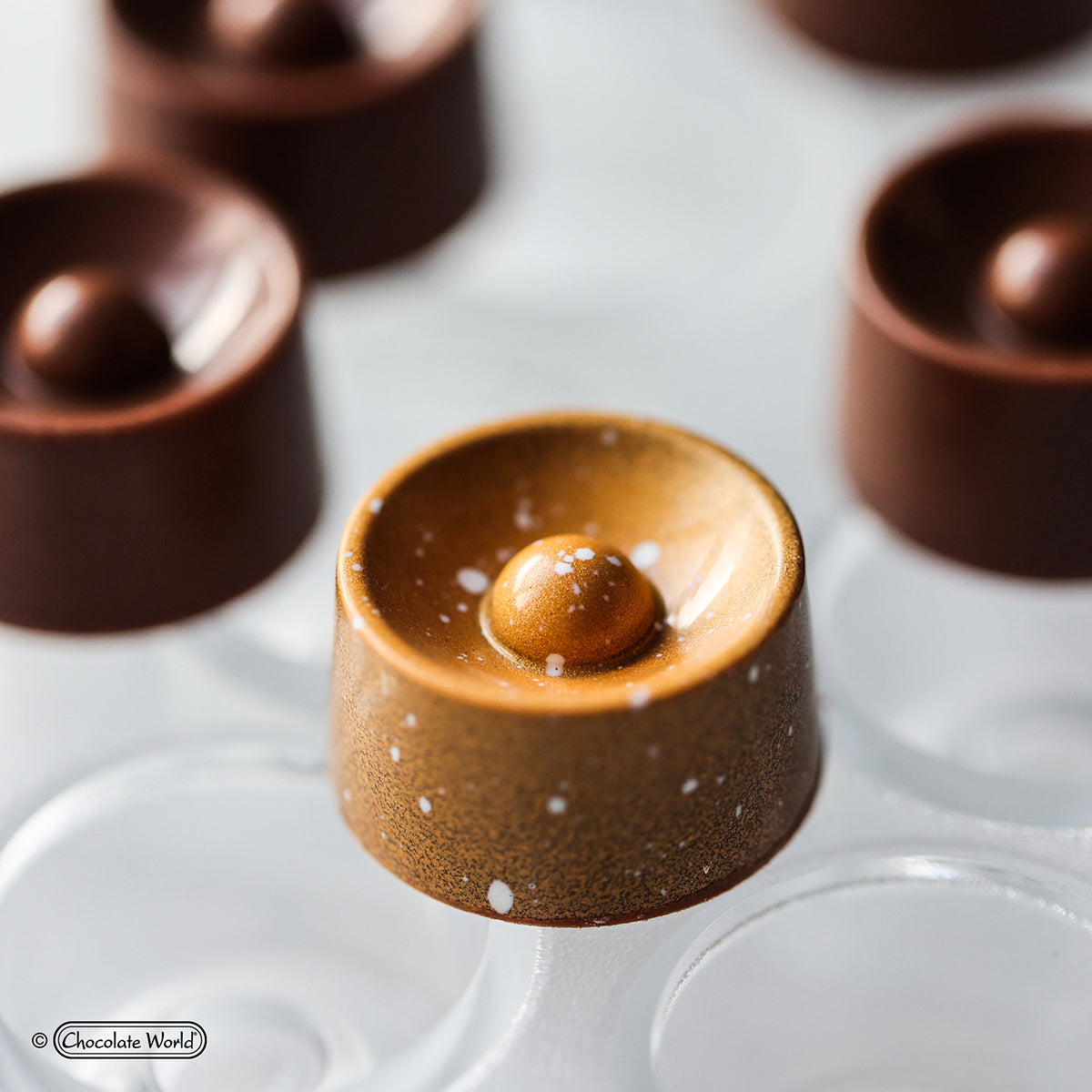
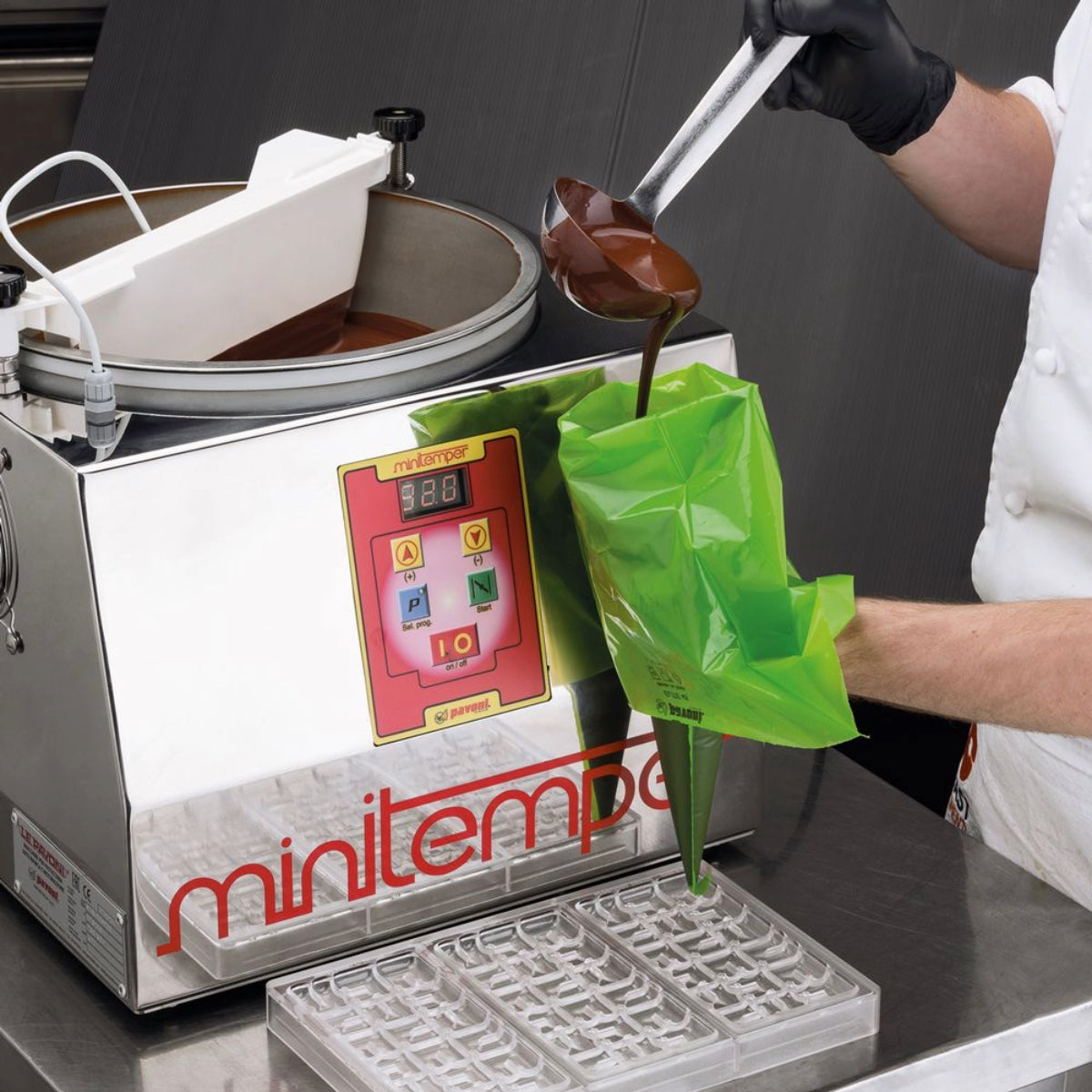
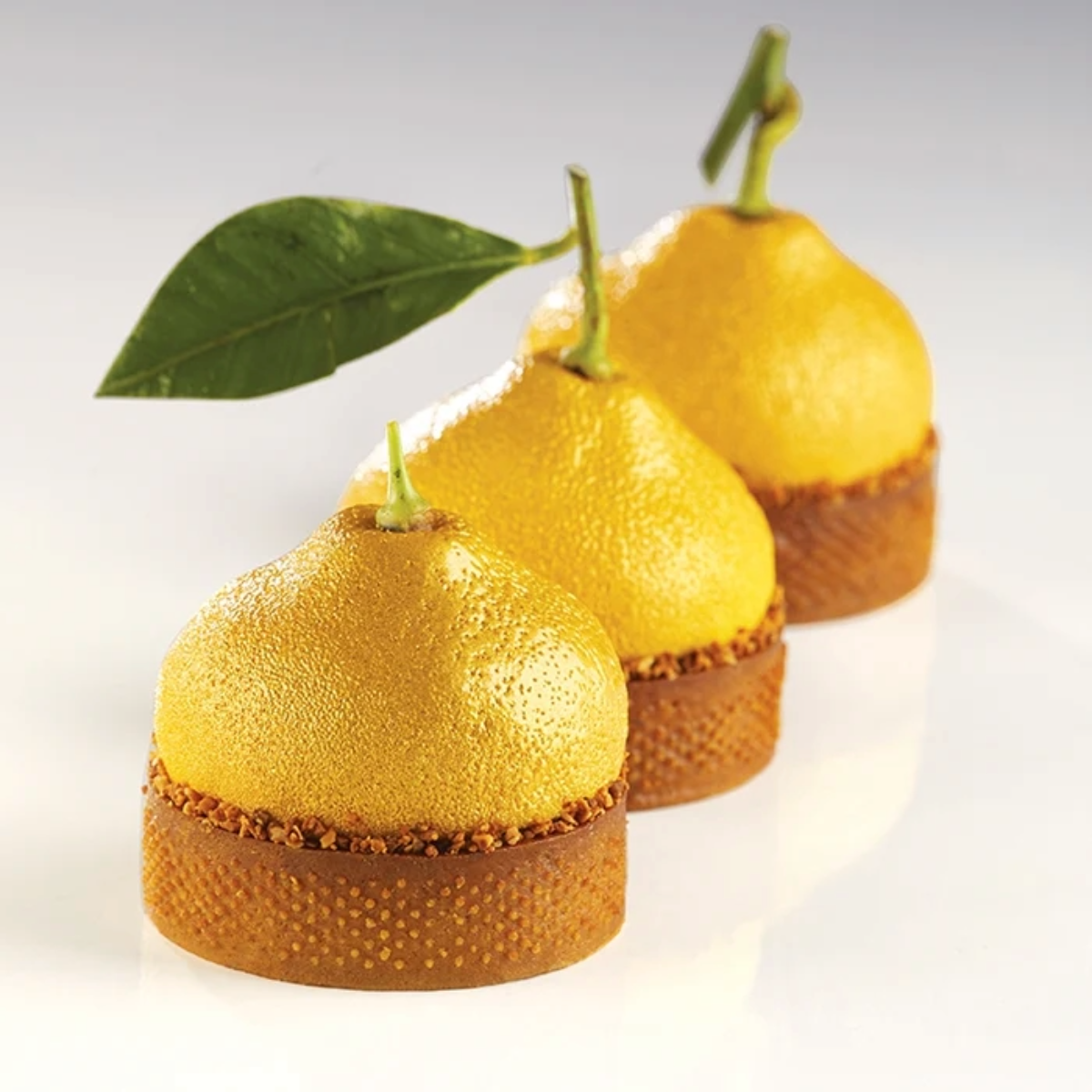
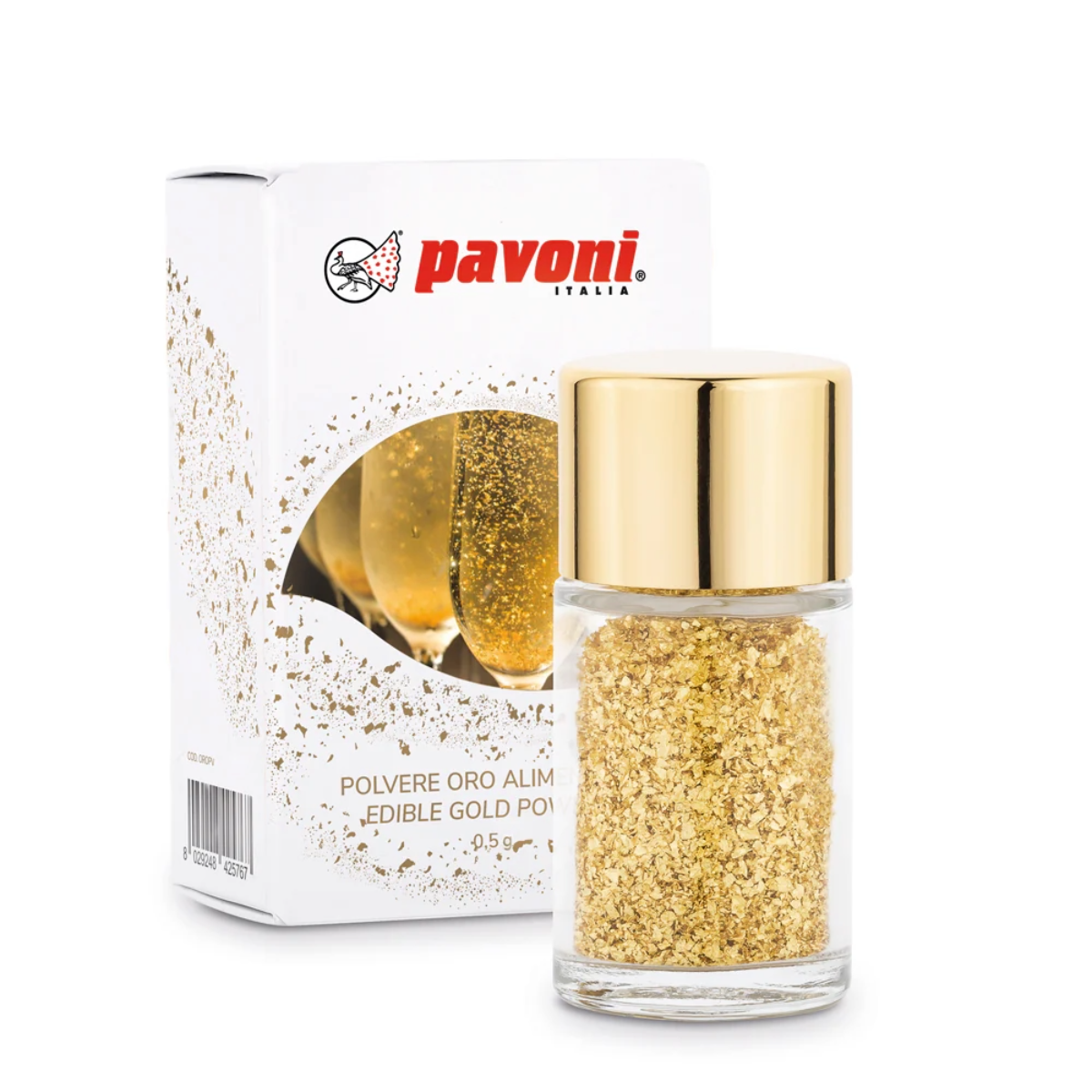

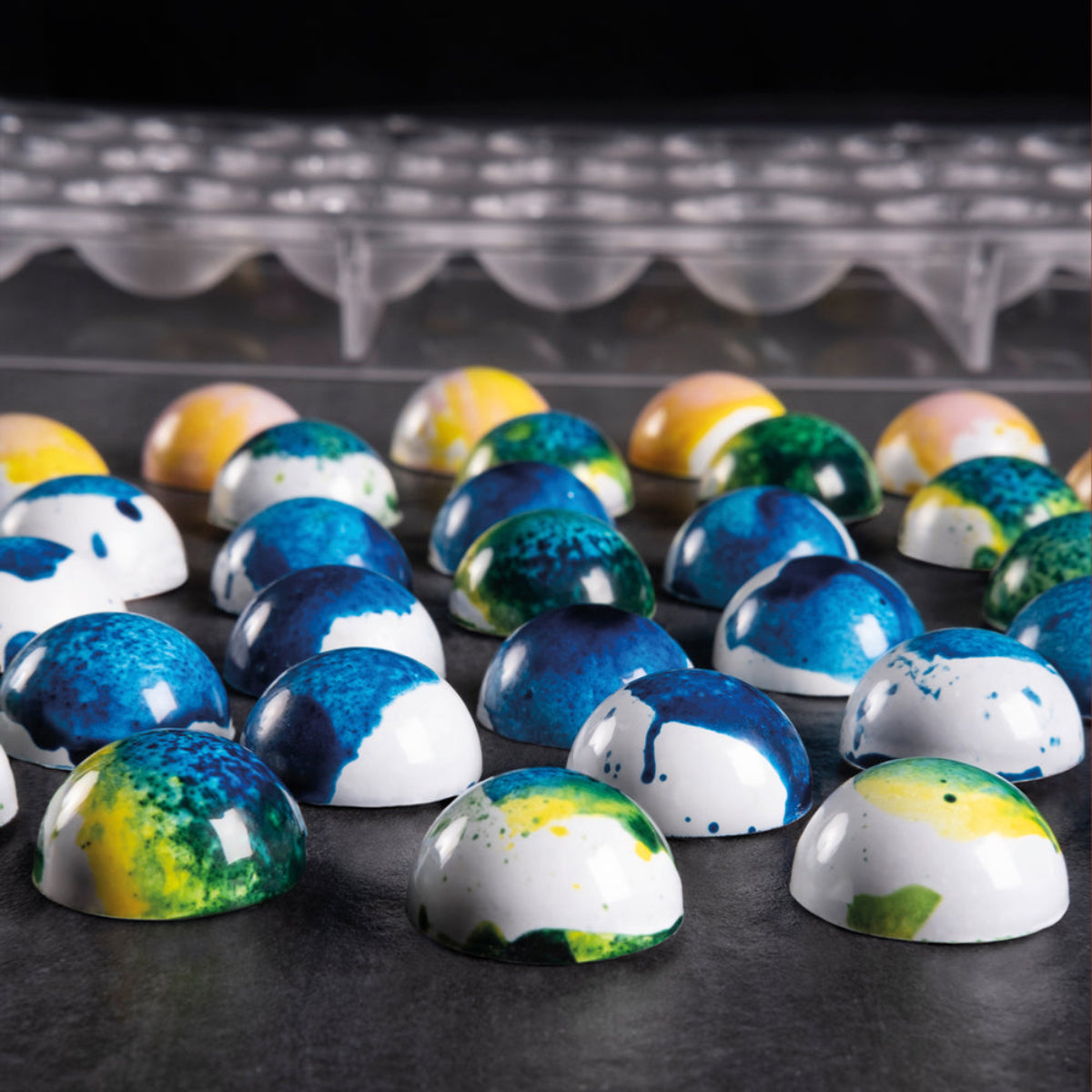



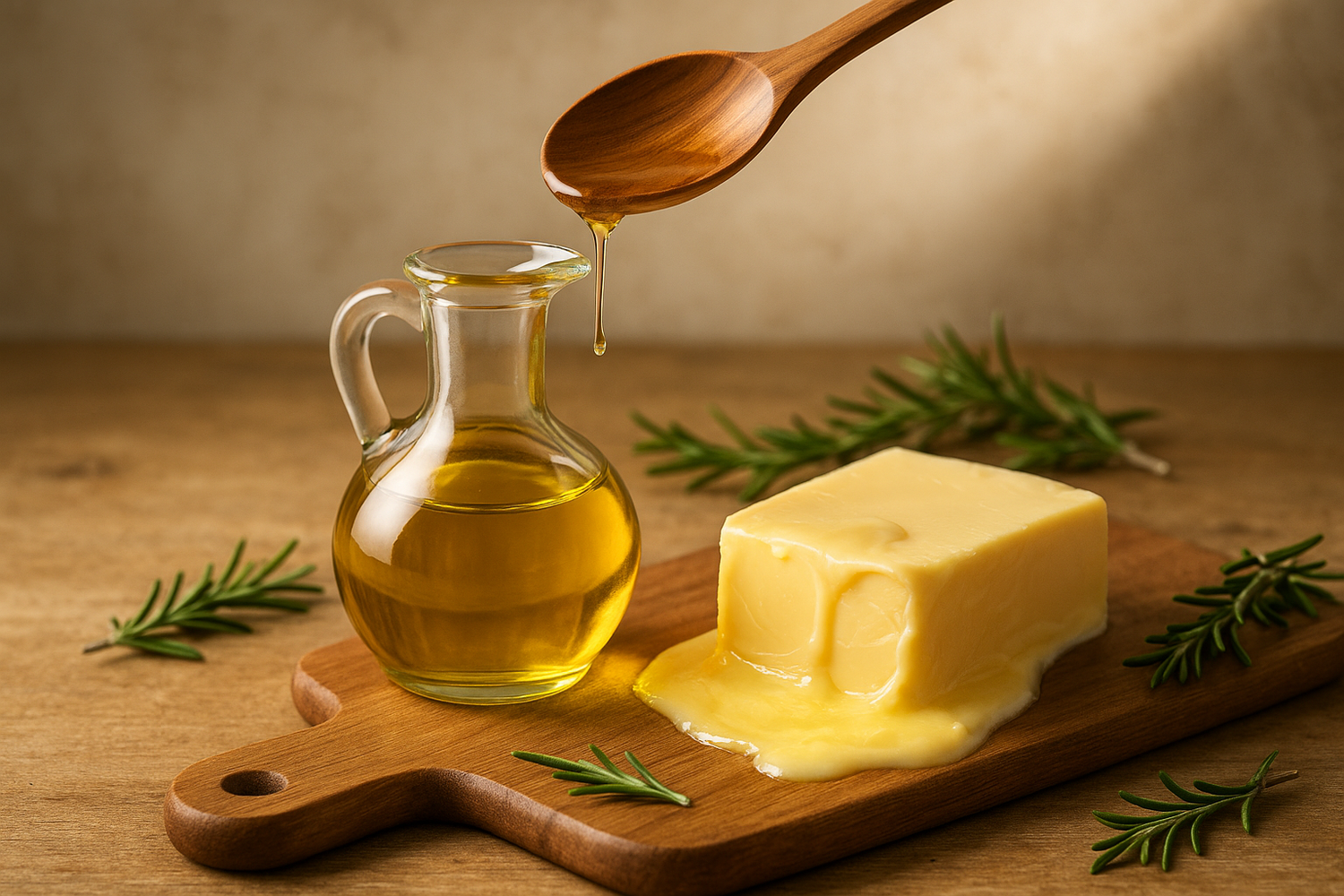
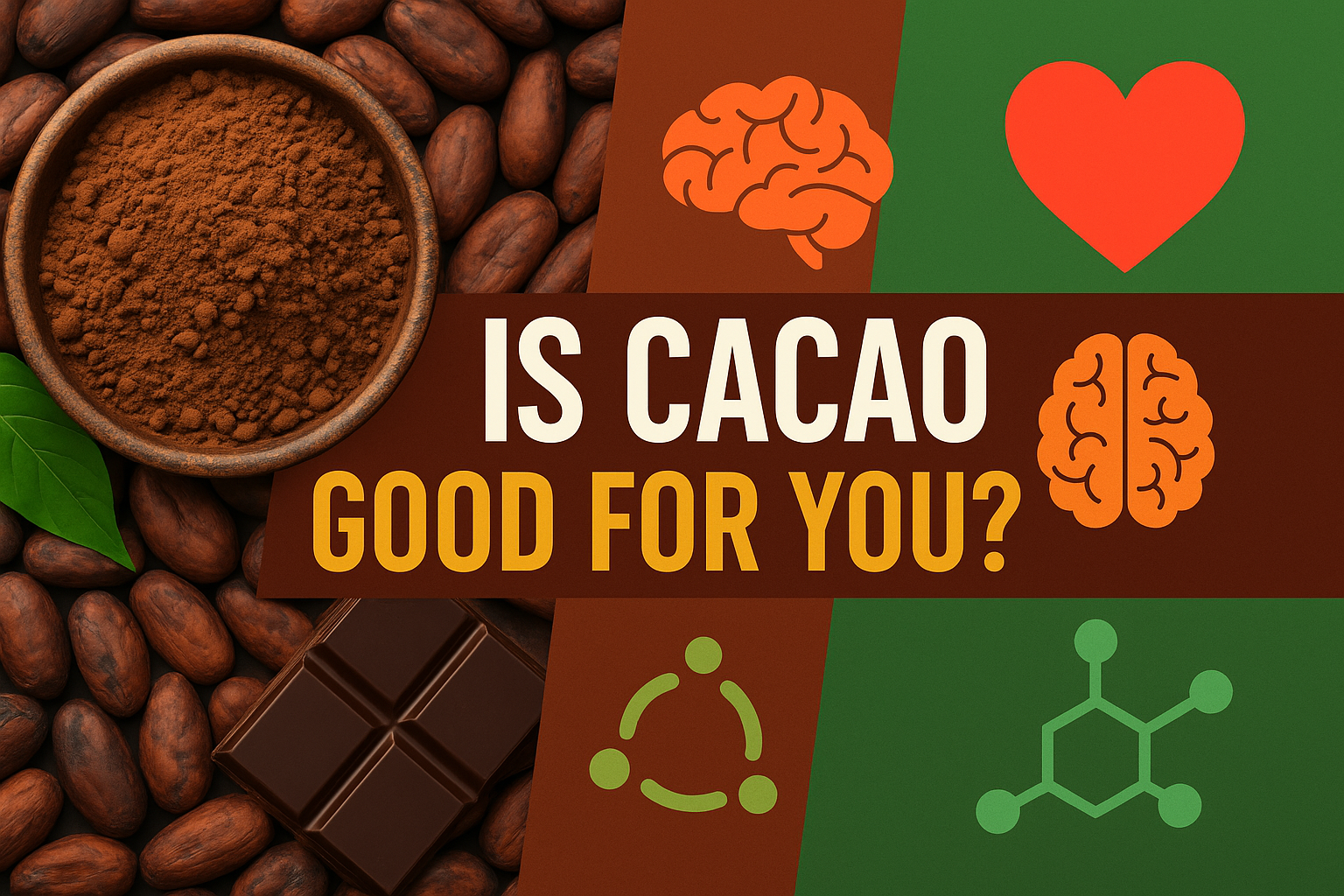























Laisser un commentaire
Tous les commentaires sont modérés avant d'être publiés.
Ce site est protégé par hCaptcha, et la Politique de confidentialité et les Conditions de service de hCaptcha s’appliquent.